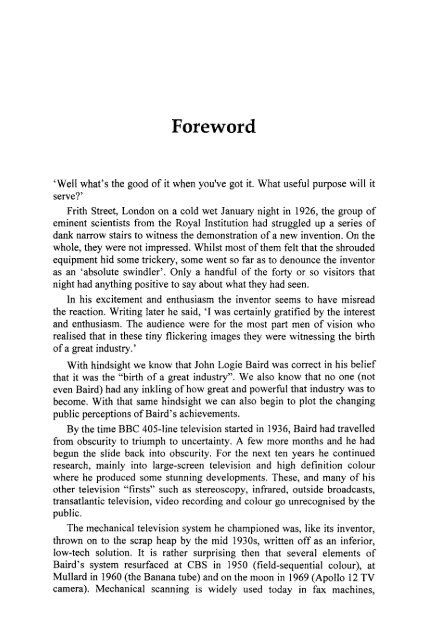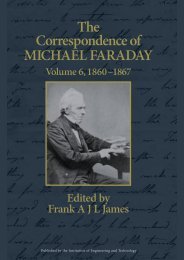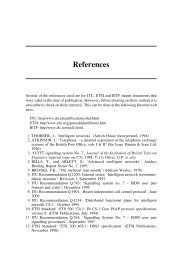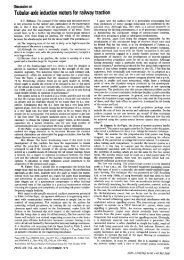Restoring Baird's Image - IET Digital Library
Restoring Baird's Image - IET Digital Library
Restoring Baird's Image - IET Digital Library
You also want an ePaper? Increase the reach of your titles
YUMPU automatically turns print PDFs into web optimized ePapers that Google loves.
Foreword<br />
'Well what's the good of it when you've got it. What useful purpose will it<br />
serve?'<br />
Frith Street, London on a cold wet January night in 1926, the group of<br />
eminent scientists from the Royal Institution had struggled up a series of<br />
dank narrow stairs to witness the demonstration of a new invention. On the<br />
whole, they were not impressed. Whilst most of them felt that the shrouded<br />
equipment hid some trickery, some went so far as to denounce the inventor<br />
as an 'absolute swindler'. Only a handful of the forty or so visitors that<br />
night had anything positive to say about what they had seen.<br />
In his excitement and enthusiasm the inventor seems to have misread<br />
the reaction. Writing later he said, 'I was certainly gratified by the interest<br />
and enthusiasm. The audience were for the most part men of vision who<br />
realised that in these tiny flickering images they were witnessing the birth<br />
of a great industry.'<br />
With hindsight we know that John Logie Baird was correct in his belief<br />
that it was the "birth of a great industry". We also know that no one (not<br />
even Baird) had any inkling of how great and powerful that industry was to<br />
become. With that same hindsight we can also begin to plot the changing<br />
public perceptions of <strong>Baird's</strong> achievements.<br />
By the time BBC 405-line television started in 1936, Baird had travelled<br />
from obscurity to triumph to uncertainty. A few more months and he had<br />
begun the slide back into obscurity. For the next ten years he continued<br />
research, mainly into large-screen television and high definition colour<br />
where he produced some stunning developments. These, and many of his<br />
other television "firsts" such as stereoscopy, infrared, outside broadcasts,<br />
transatlantic television, video recording and colour go unrecognised by the<br />
public.<br />
The mechanical television system he championed was, like its inventor,<br />
thrown on to the scrap heap by the mid 1930s, written off as an inferior,<br />
low-tech solution. It is rather surprising then that several elements of<br />
<strong>Baird's</strong> system resurfaced at CBS in 1950 (field-sequential colour), at<br />
Mullard in 1960 (the Banana tube) and on the moon in 1969 (Apollo 12 TV<br />
camera). Mechanical scanning is widely used today in fax machines,

















